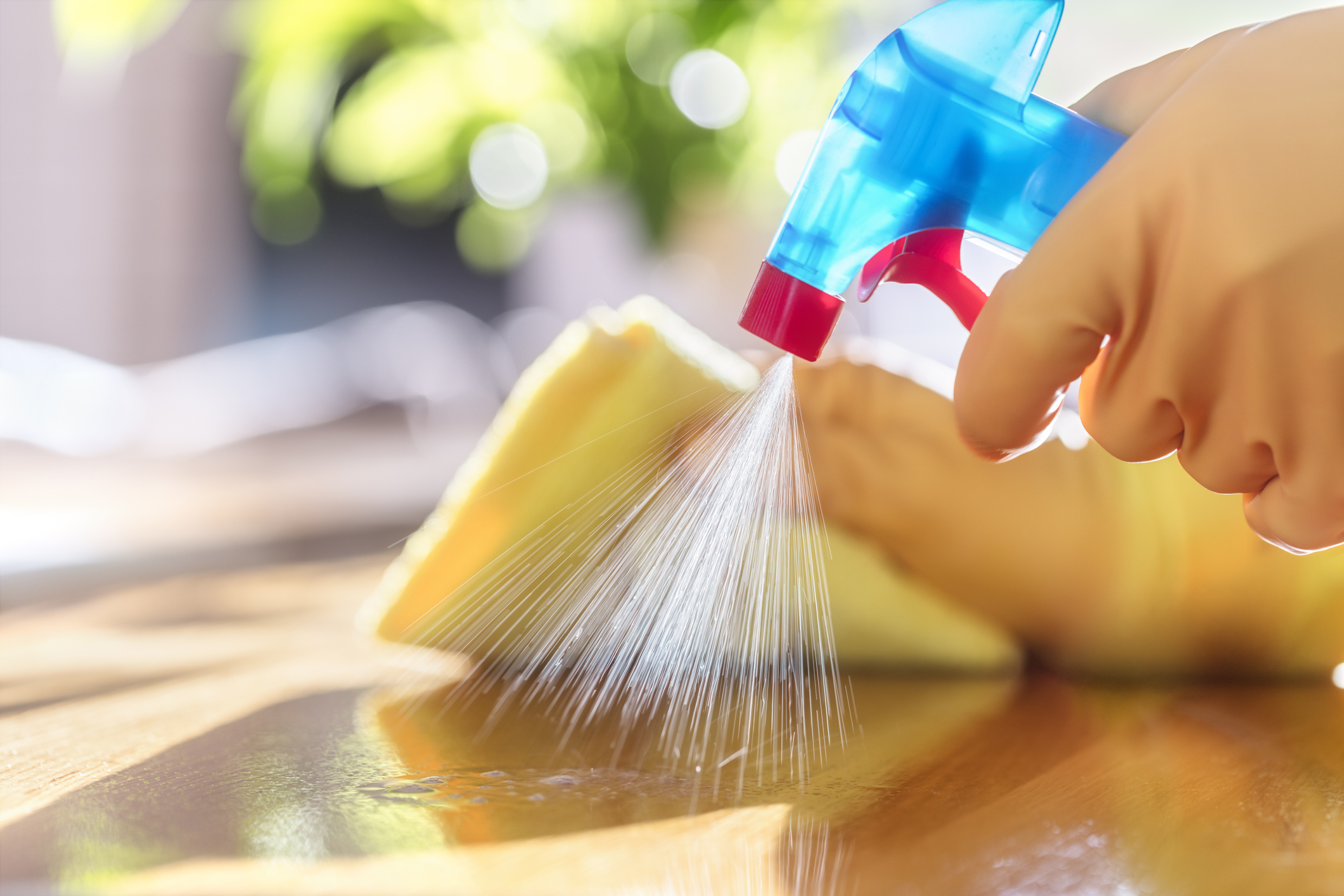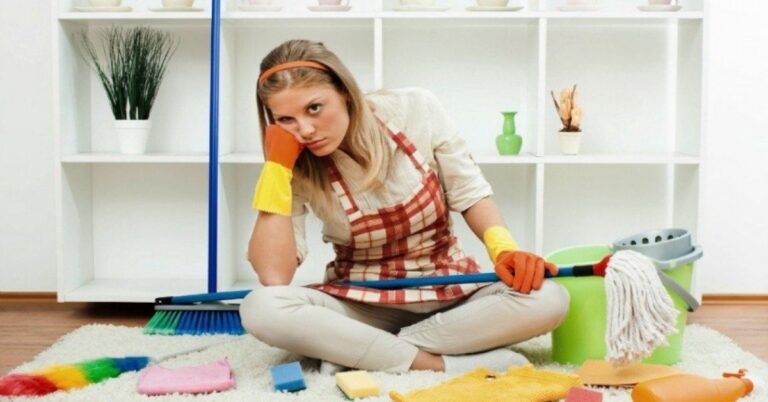How to Disinfect Everything: Cleaning Tips for Coronavirus in the Home
To say that we live in challenging times is an understatement. Our lives have been disturbed, and our economy has suffered due to the COVID-19 epidemic. Worse, we have no idea when the current crisis will be addressed or what long-term consequences it will have.
The good news is that you aren’t powerless. Personal hygiene and thoroughly cleaning and disinfecting your home are excellent ways to safeguard yourself and your loved ones. To assist you, we’ve put together a guide for cleaning your home against COVID-19.
Whether you clean yourself or use professional deep house cleaning services in Louisville, KY, and the surrounding areas, the following cleaning and disinfecting advice will come in handy. Continue reading to learn more!
When it comes to cleaning and disinfecting, what’s the difference?
First, let’s clear up a common misconception about COVID-19 cleaning before we get into the nitty-gritty. Cleaning, disinfecting, and sanitizing all have essential differences.
The following are the distinctions:
Cleaning entails regularly dusting, wiping, and washing with all-purpose detergent or water and soap. It removes dust and filth, but it does not guarantee that germs are killed or removed. When deep cleaning a home, this is crucial.
Disinfecting kills germs but doesn’t get rid of dirt and grime on a surface. As a result, it should only be done after you’ve cleared an area. This is the most critical aspect of a coronavirus cleanup.
When a surface has been cleaned or disinfected but not both, it is sanitized. In general, you should clean and disinfect a piece of equipment.
During a coronavirus pandemic, how can I keep my house clean?
A COVID-19 cleaning is similar to a stricter version of regular cleaning. In addition to the typical vacuuming, mopping, and dusting, you must wash and disinfect items that you would not ordinarily clean or disinfect. While you’re inside, discover how to disinfect coronavirus and keep your home from becoming a breeding ground for the virus. Learn how to thoroughly disinfect your home by following the cleaning techniques and advice below.

Cleaning thoroughly and often is required to learn how to disinfect coronavirus throughout your home. Increase the frequency of your regular cleaning activities and pay extra attention to high-traffic areas. Try to stay as much as possible inside your home, but exercise caution if you must leave and return. The measures below will assist you in keeping your house secure and tidy.
Cleaning your house during the COVID-19 epidemic is easy if you follow these tips:
Make sure your hands are clean
Before you start cleaning, make sure you wash your hands according to the CDC’s recommendations. Scrubbing your hands for 20 seconds with warm, soapy water is one of these tips. Make sure you wash your hands every time you come inside the house. One of the most effective strategies to avoid spreading the disease into your home is to wash your hands.

Another thing to keep in mind is that if you can get your hands on disposable gloves, you should try to wear them whenever you’re out in public. Simply dispose of them as soon as possible and then wash your hands as directed above.
Put on safety gear and clothing to protect yourself
When cleaning, you should also wear disposable gloves. However, if you don’t have disposable gloves, you can use reusable rubber gloves and wash them afterward. Separate your gloves for the kitchen, the bathroom, and the rest of your house.
It’s also a good idea to wear a mask while cleaning. This will prevent you from inhaling harmful substances and preventing you from touching your face. To reduce the spread of infections, the CDC now recommends that everyone wear masks in public.
Choose high-quality products
The Environmental Protection Agency (EPA) has released a checklist of disinfectants that have been certified for use during the COVID-19 epidemic. Take the time to familiarize yourself with the instructions on the bottle before using one of them.

Thoroughly clean each surface
Cleaning your surfaces is the first step in removing dirt, germs, and viruses. Most germs may be removed with warm, soapy water. Clean hard-to-reach locations like cracks and corners with a sponge or cloth that can be washed after each use.
Ensure that all surfaces are well cleaned and disinfected
Cleaning is followed by disinfection, which kills any viruses on the surface. Use items suggested by the Environmental Protection Agency, such as Clorox Wipes or Lysol Spray, to disinfect. Many of these items are presently out of stock, but you can disinfect your surfaces with a CDC-approved solution made from home bleach and water.

Clean up the packages
During the pandemic, we’re sure you’ll be doing some internet shopping. If you get packages in the mail, make careful to disinfect them before opening them. According to studies, coronavirus has been discovered to live on cardboard for up to 24 hours.
Clean your groceries and store-bought items
Disinfect your store-bought products once you get home from the store. This is also true if you have your groceries delivered to your home. Remove and discard the original containers of the products as soon as possible, and replace them with your own. Otherwise, disinfect packaged products using a disinfectant wipe. Use produce-safe soap and water to wash your fruits and veggies. If you bring your own bags to the store, make sure to wash them afterward.
Throw away takeout containers and other food-service items
If you order takeout or have food delivered, replace the food containers as quickly as possible with your dishes. To stay open, many eateries have improved their sanitation methods. Still, it’s essential to avoid eating off cardboard or plastic surfaces wherever feasible. Coronavirus can survive on plastic surfaces for up to three days.
Wash your clothes regularly
Wash your garments regularly, as you would usually. If you want to be extra safe, wash the clothes you wear outside or to the store right away. To help kill viruses, wash your clothes as often as possible in warm to hot water and dry them on high heat. Regularly disinfect any surfaces where your filthy clothes may come into touches, such as your hamper and coat rack.
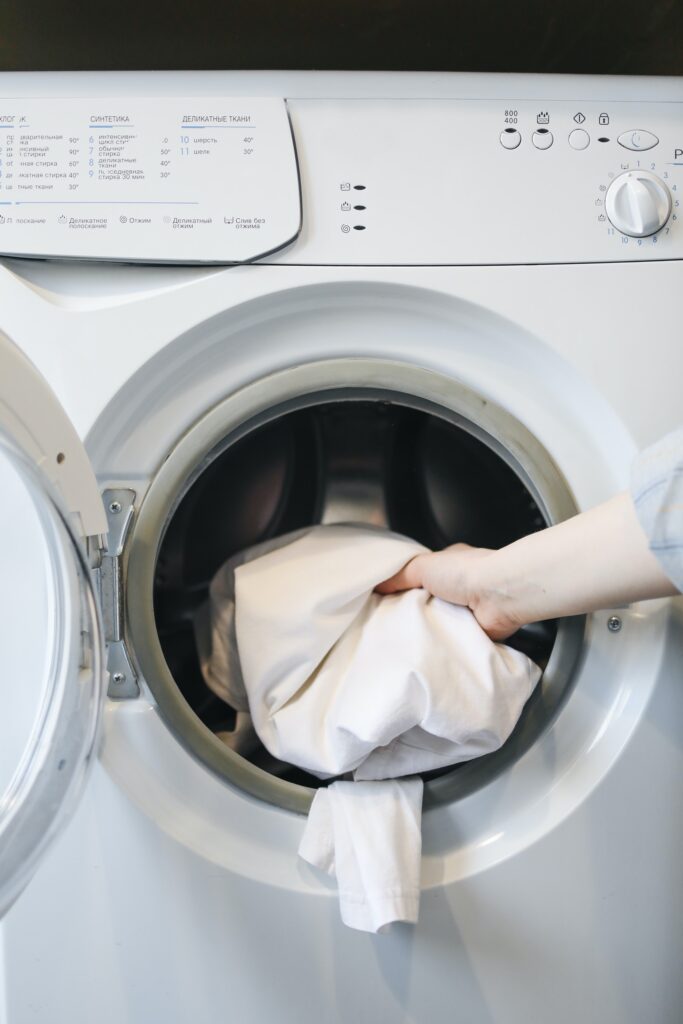
If you don’t have a washing machine, try to keep your excursions to the laundromat to a minimum. While you’re there, keep a six-foot distance from others and wear a cotton face mask and gloves.
Isolate everyone in your household who is sick
If a family member becomes ill, attempt to confine them to a single room. Even if they haven’t tested positive for coronavirus, it’s advisable to be careful and isolate them from the rest of the family. Ascertain that they have food, cleaning supplies, and a garbage can. Use gloves or wash your hands totally before and after handling anything they’ve touched.

Do a thorough cleaning of your home
Finally, if you haven’t recently deep cleaned your home, we recommend that you do it as soon as possible. You don’t want harmful bacteria and parasites dwelling under your furniture or inside your refrigerator.
Sanitize high-traffic areas regularly
Sanitize high-traffic areas daily, especially when you leave and return home. We’ll go over some joint surfaces and objects in the following sections.
Remember to clean these surfaces and items!
The objects we encounter daily may be the simplest to overlook. These items aren’t routinely sanitized, but they’re high-traffic areas that could be the first things you touch when you get home.
Take care to clean and sanitize the following objects regularly:
Doorknobs and handles
The first thing you touch is your doorknob when you enter your home. Use a disinfectant spray, solution, or wipe to coat the entire knob once you’ve returned inside. Don’t overlook the knobs and handles in each area of your home, as well as the handles in your kitchen. Consider the objects you use daily, such as your refrigerator and microwave.
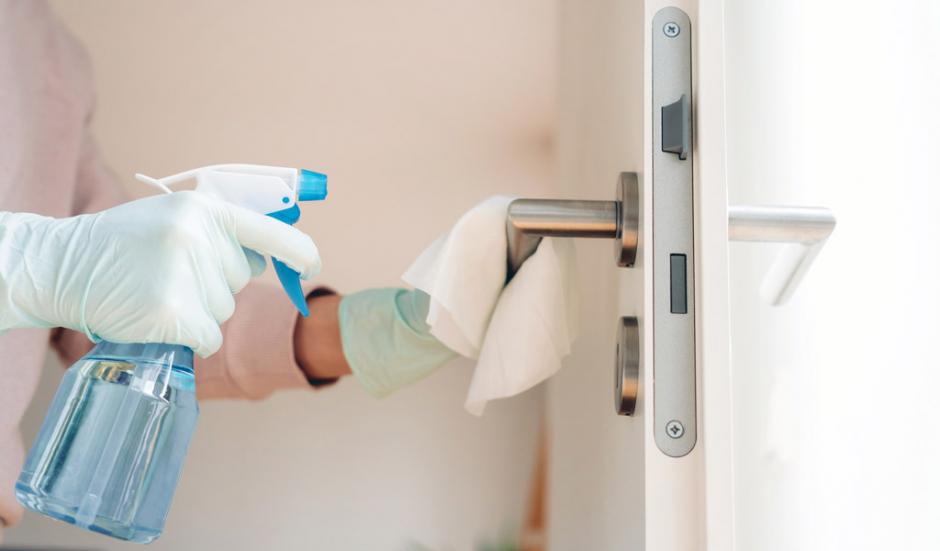
Cell phone
Your phone could be the leading source of illness transmission. We’re continually touching our phones and setting them down on surfaces throughout the day before getting them up to our faces. Sanitize your cellphone at least once a day and every time you come back into your house.
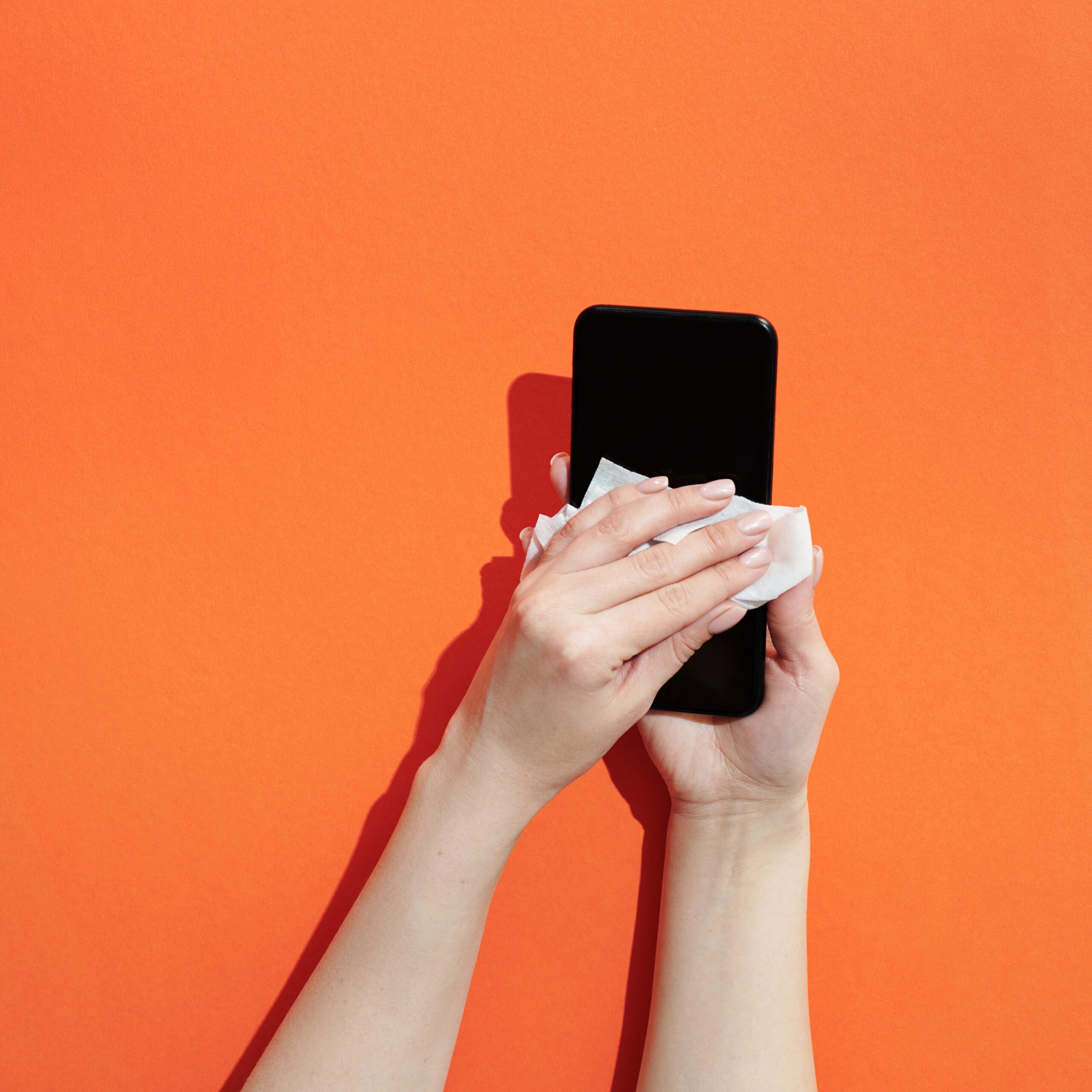
Computer
Even if you don’t take your laptop outside, chances are you use it daily. If your hands aren’t spotless, you could be spreading germs and diseases across the keyboard and screen.
Light switches
We use light switches daily, yet we rarely consider them when cleaning. Wipe down your light switches and lamps at least once a day to prevent the virus from spreading throughout your home.
Sanitize your TV remote, stereo remote, and other remotes at least once every day.
Bags and accessories
Your purse, wallet, and other accessories may come into contact with contaminated surfaces when you’re in the store or in a public place. You may need to hand over your credit card or ID while buying. Make a habit of wiping these items down regularly and whenever you get home.
Your keys
You carry your keys around with you at all times. When you come back into the house from outside, make sure to sterilize your car and house keys.
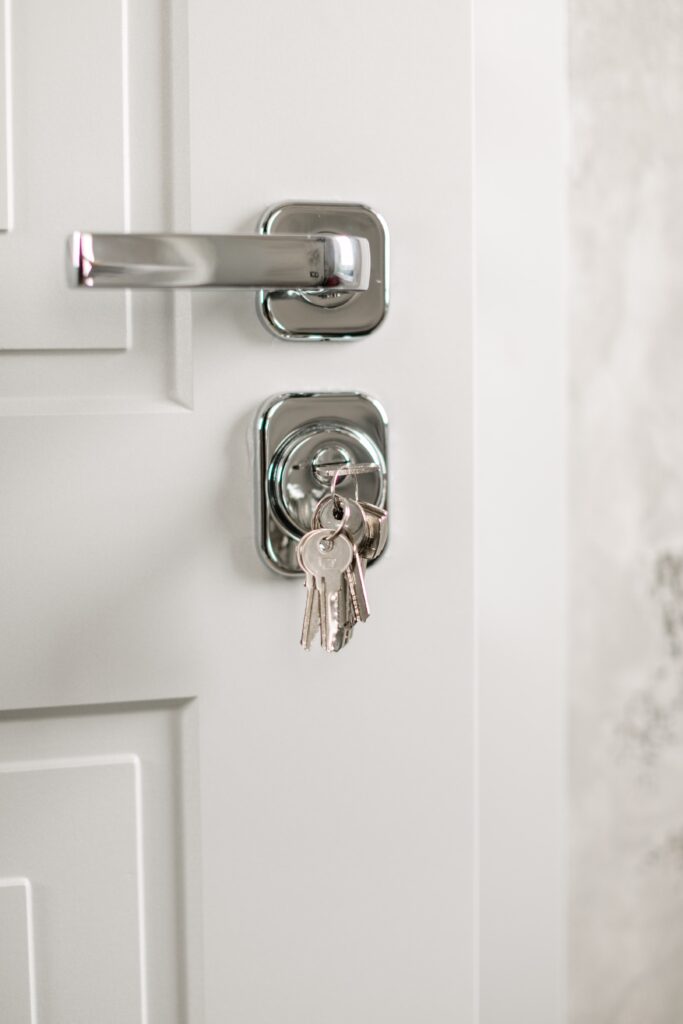
Smart locks and panels
Does your home have an innovative security system or a smart lock? If you do, chances are you use it daily. Make care to disinfect these devices regularly!
Which Cleaning Products are Effective Against COVID-19?
Because not all cleaning substances are effective against all types of bacteria, you should know which ones are efficient against COVID-19.
The EPA provides a comprehensive list of disinfectants that are effective against the new coronavirus. You may already have some of these valuable items in your home, such as:
- Wipes for disinfecting, such as Clorox, Lysol, or store-brand wipes
- Purell, Clorox, or Lysol are examples of disinfectant sprays.
- Isopropyl alcohol is a type of alcohol.
- Peroxide (H2O2)
While it’s critical to use effective virus-killing products, following correct disinfection practices is equally vital. According to the EPA, allowing the product to rest and remain wet on surfaces or items for 10 minutes will kill 99.9% of germs.
Suppose you don’t have any disinfection items on hand and can’t locate any in stores. In that case, the CDC has instructions for making a bleach disinfectant spray at home. Use gloves, open the windows and be cautious since bleach can damage or discolor delicate surfaces if you use this product.
What if the disinfectant isn’t available at the store?
Hand sanitizer, cleaning wipes, and cleaning sprays have all been in limited supply across the country. Many residents are preparing to defend themselves by storing up on supplies. If you can’t obtain disinfectant, you can make your own disinfection bleach solution by following the CDC’s instructions. The bleach is diluted in this recipe, which only calls for around five tablespoons per gallon of water. Use this solution as you would any other store-bought disinfectant on your hard surfaces.
Our final say…
To avoid the spread of the coronavirus pandemic, the best strategy is to stay indoors. Everyone will have to get out of the house for various reasons, including going to the gym, buying food, and more. Whether or not you plan to leave the house, cleaning is a proven method of protecting yourself from the virus. Follow the CDC’s cleaning and disinfection recommendations for the best protection.
As you can undoubtedly tell from this essay, deep cleaning and disinfecting your home is a time-consuming and exhausting procedure. However, it is necessary to safeguard the safety of your family.
Consider contacting Maids in Apron if you don’t have the time or energy to do it yourself. Our professional cleaners will gladly disinfect your home. At the same time, you relax with your family, take a relaxing walk, or watch your favorite television shows. Book your deep cleaning today and take advantage of our 100% satisfaction guarantee.

